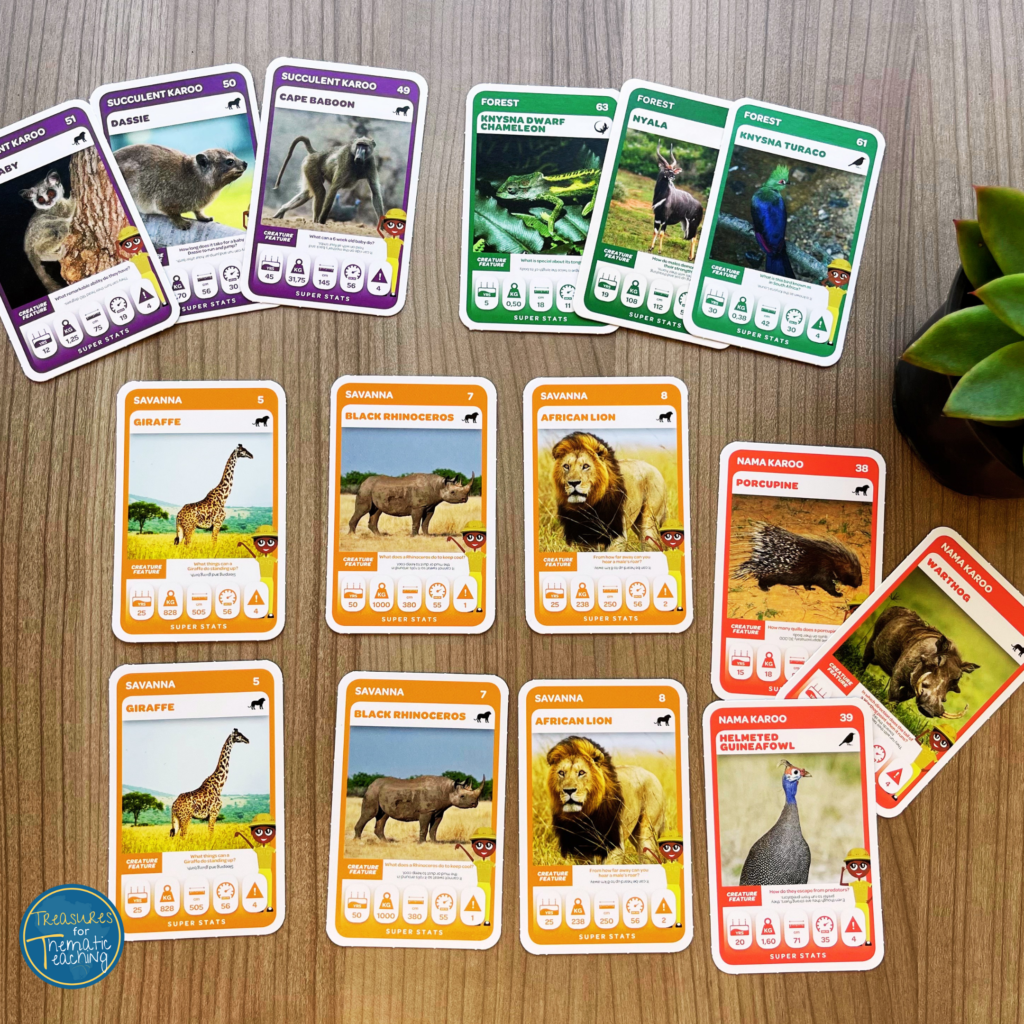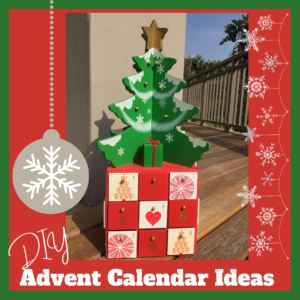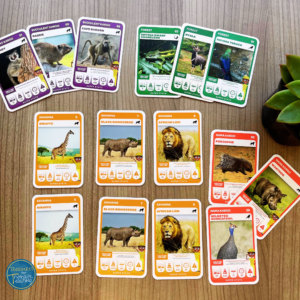Pick n Pay has added to my excitement and my slightly obsessive need to have everything in themes, and brought out the South African Super Animal Cards. 108 South African animals to collect.
If I am excited about them, then I am sure there are many children out there who are just as excited. At school I’m sure there is lots of ‘wheeling and dealing’ taking place trying to finish collections. I am sure most teachers are already tired of the arguing that takes place when this type of craze hits. Teachers, don’t discourage them just yet! I have some ideas of how these can be used in the classroom. Parents at home, you can use some of these ideas as well.
Language Development
- During rings or discussion time, choose a card or a few and talk about the animals with your class. For the older children research and discuss each biome as well as the animals in it. Help the learners to build their vocabulary and their knowledge at the same time. Encourage thinking, speaking and listening. Ask the children questions such as
- Have you seen this animal before? If so where?
- What colour is the animal?
- Can you show me the animal’s eyes, ears etc? How would you describe their eyes, mouth, body?
- Do you know which animal group this animal belongs to? (Mammal, fish, reptile etc) How do you know that it belongs to this group?
- Compare two different animals? Talk about any similarities or differences.
- How can we protect these animals?
- How can we protect the environment that these animals live in?
- Use the cards to create a story. This can be done orally, written or both. Choose three cards and get the learners to create a story based on these animals. Once they have told you their story, they can write their story. For younger children, get them to draw their story.
- Descriptive Paragraph: Get the learners to write a descriptive paragraph about an animal based on one of their animal cards.
Developing Numeracy
- For younger learners, get them to identify the numbers on the cards.
- Encourage counting, adding, subtracting etc.
- The learners can count how many cards they have.
- Talk about who has more or less. How many more does the person have sitting next to you?
- Basic problem solving: I have two cards and my friend gives me three more. How many cards do I have now?
- Get the children to count in 2’s, 5’s or 10’s, then ask them to find those cards in their set.
- Identify which cards are even numbers, odd numbers, prime numbers etc.
- There are many ways to sort and order the cards which is good for early numeracy.
- Colours / biomes
- Numerical order
- Animal classification groups e.g. reptiles, amphibians, mammals etc.
- Sort according to categories such as weight or height. Smallest to biggest or biggest to smallest
- Data Handling: Get the children to conduct a survey about the animal cards and then represent the data as a bar graph. Ideas for a survey could be
- How many children enjoy collecting cards in my class?
- Which is your favourite animal? Decide on 5 animals and see which one is the most popular in the class.
Geography
- Research where the different biomes are in South Africa. Identify these areas on a map.
- Give the learners a South African map and get them to colour the biomes on their map according to the colours on the cards.
Natural Science
- A research project or an oral presentation based on an animal they have chosen from their set of animal cards. Get the learners to research more information about a specific animal and present this as an oral, powerpoint presentation or written project.
Art and Craft Ideas
- Get the learners to choose a card and draw/sketch/paint the animal that is on the card.
- Use the cards as inspiration to create animals from waste or other materials such as
- box construction animals
- animal masks
- Puppets from socks, paper bags or on ice-cream sticks. You can link this back to the learners’ stories and get them to present their story now as a puppet show.
Movement and Music ideas
- Movement: Choose a few animals that will provide a variety of movements e.g. a slithering snake, stomp like an elephant, scuttle like a crab, fly like a bird. Incorporate your animal cards into your movement ring and when the children see a specific animal they need to move like the animal. Choose a specific biome and tell a story based on that biome. For example, you are all on a trip to the coast. While you are walking along the beach you see a ghost crab. Get the learners to move like a crab.
- Music: Use songs about animals that can be linked to the animals on the cards. These can be used during your music ring or at the end of each day, one child can choose a card and the class can sing the song about that animal.
- For the older learners, let them work in groups to create a song about a specific animal or even more challenging, get them to create a song about a biome and the animals that live in it.
GAMES
- Snap! Yes, that simple game we played when we were younger. Collect two sets of the animals cards, or simply pull out any cards that have ‘doubles’. Shuffle the cards and split them so that each player has an equal amount of cards. The children will each have a turn to put one card down, then the next person will put a card down. If the two cards are the same animal, the first person to call out “SNAP” gets the pile of cards that has already been put down. The person with the most cards at the end of the game is the winner.
- Matching memory game: Take out 6 cards and their “doubles”. You should have 12 cards in total. Shuffle the cards and then place them upside down in 4 rows. There should be three cards in each row. Two people can play the game. The first person turns over two cards. If the cards are the same, the person gets to keep them, if they are different the person needs to turn them back over. The second person then gets to do the same. The game is finished when all the matching sets have been found. The person with the most cards at the end of the game is the winner. You can use more or less cards for this game, it depends on the age of the children.
- What is missing? Choose some cards. Get a child to look at the cards. Get the child to turn away or close their eyes. Remove a card. Ask the child to tell you which card is missing. You can make this game more difficult by adding more cards and also by removing more than one card at a time.
- Can you guess the animal? Get one learner to describe an animal on a card, and the other learners need to guess which animal is being described. This could work well before the learners have to write a descriptive paragraph about an animal. Listen to the sound of the animal and see if the learners can guess the animal from hearing the sound.
- Remember the order. Choose a few cards and place them in a line. Get the learner/s to look at the cards. Shuffle them up. Get the learner/s to put the cards back into the order that you had them in.
Other Ideas
There are many ideas and ways of using these cards to inspire learning in the classroom. Last year, Pick n Pay had the Super Animal cards. I laminated my super animal cards, to make them more durable for when I want to use them in the classroom. They still work in the sound card reader gadget that you purchase from Pick n Pay.
Many schools in our country are seriously lacking in resources. For some children they have never seen or even heard of some of the animals that exist in our world. They don’t have a TV to tune into channels such as Animal Planet or NatGeo Wild. For them these cards are the closest they will ever get to seeing these animals.
I rounded up some spare and unwanted cards and I was able to put together some sets. They were taken to schools and given to teachers that don’t have much in terms of resources.
If you don’t want the cards, collect them and find a school or a place that can benefit from them. Share this post with them to give them ideas on how they can use the cards. By sharing the cards and some creative ways to use them in the classroom I hope that more children are able to benefit and learn from what I think is a pretty awesome resource.





